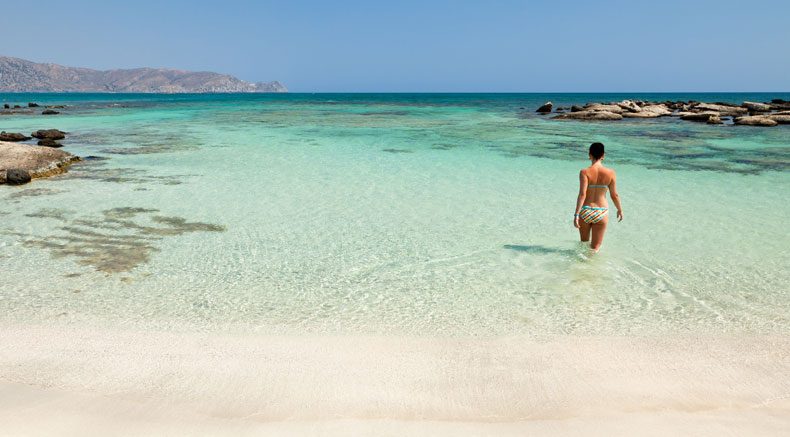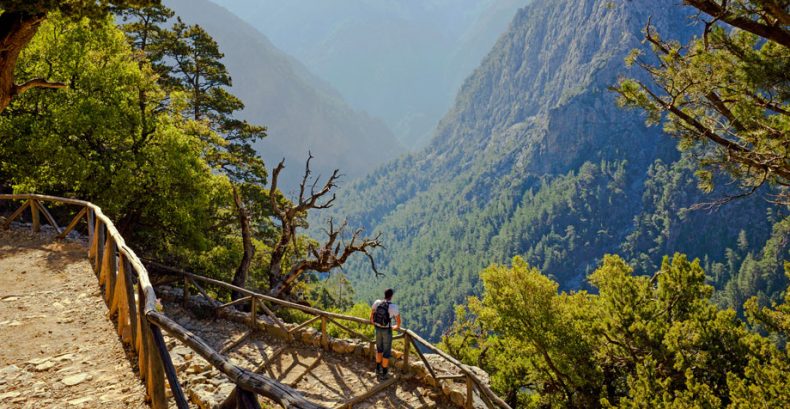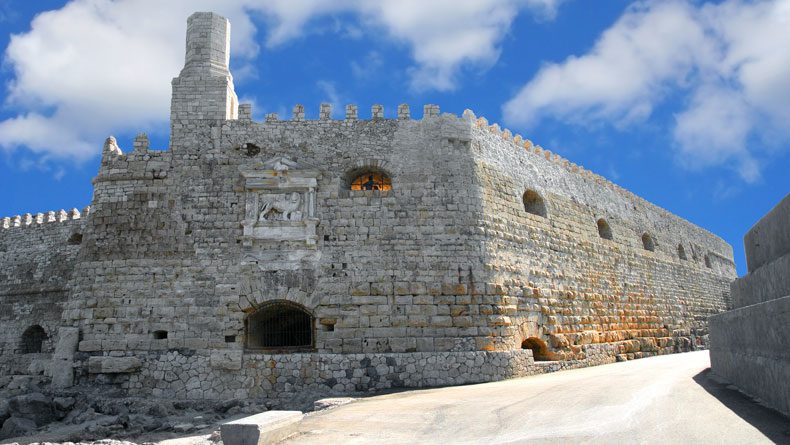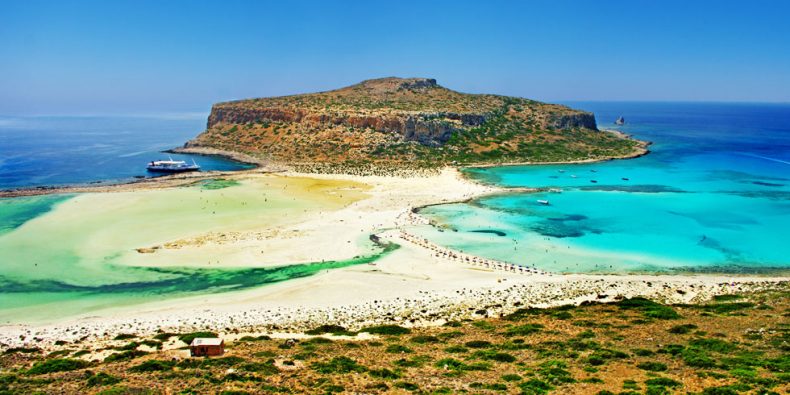Crete: From Dizzying Peaks to Shining Sea
First things first, let’s get one thing straight, as a Greek destination, Crete is in a class of its own. While all the other Greek islands belong to groupings with similar histories and characteristics, Crete stands alone, massive and proud on Europe’s southern edge.
Indeed, it often doesn’t feel like an island at all, but rather a mini-continent where one can literally find everything. Snow-capped mountains? Check. Rivers and waterfalls? Check and check. Fertile plains, incredible produce, some of the planet’s best beaches, and one of the oldest histories anywhere in the world? Yes.

Elafonisi beach, Chania Crete
Here one really feels like the rest of the world could disappear and Crete would do just fine (which may go some way to explaining the fierce independence of its residents).
So it goes without saying that on Crete, working with Greece vacation experts Hellenic Holidays, you can put together the ultimate Greece vacation package. Or several in fact. It is, after all, no accident that Tripadvisor named Crete as one of the top 5 destinations in the world for 2018.
To get a better idea of the richness that this mini-continent offers, let’s start from the top – literally.
The Otherworldy Peaks of Crete
Alpine landscapes and snow-capped peaks are not the first things to spring to mind when one thinks about Crete. Yet even as late as May, when temperatures at sea-level regularly climb above 30°C (86°F), sun-kissed visitors may gaze up and be surprised to see streaks of snow and ice still clinging to Crete’s highest mountains.
The fact is that Crete has some serious mountains, far taller than those found on any other Greek island. The tallest of these, Mount Ida (aka Psiloritis), located almost right in the heart of the island, reaches 2,456m (8,057 ft). To the west, in the region of Hania, the White Mountains are in a very close second, with their tallest peak reaching almost the same height. And in the east Mount Dikti also reaches into the clouds with peaks above 2,100m.
These towering formations could be said to form the backbone of Crete, enriching the island with an incredible diversity of landscapes, flora and fauna. Adventurous mountaineers can head into the moonscapes of the highest regions of these ranges, for guided hikes with jaw-dropping views, or even ski-touring in the winter and spring.
Unsurprisingly these towering mountains are also rich in myths. According to one version, Zeus was born on Mount Ida, and later hidden in one of Mount Dikti’s incredible (and visitable) caves from his murderous father, Cronus.
Further down the mountains one finds high mountain plateaus that have been cultivated since Minoan times, producing some of the incredible meat and vegetables that Crete is famous for. These lands are still worked today by locals who live in the island’s many mountain villages.
These settlements are some of the best places to explore the authentic side of Crete. In villages such as Anogeia, built high on the slopes of Mount Ida, the land’s traditions are very much alive and well, passed on from generation to generation by locals fiercely proud of their heritage. Here you can find high-quality local handicrafts and enjoy some of the finest traditional cooking Crete has to offer – accompanied of course by plentiful, fiery raki (a locally produced spirit). Your Greece vacation experts Hellenic Holidays will also be able to tell you when to catch one of the frequently organized traditional festivals – truly an experience not to be missed, and as an exciting and heady a night out as any nightclub can offer.
Coming Down the Mountain
Crete’s mountains also provide another source of beauty and richness: the rain and snowmelt that cascades down their slopes in the form of rivers and waterfalls. Over the millennia this flowing water has carved deep gorges of almost indescribable beauty.
Crete has many such gorges, the most famous being that of Samaria in the White Mountains. Located in the heart of a national park, this gorge is one of the longest in Europe and one of the most beautiful trails in the world. The hike may be long (16 km, or 10 miles) but it is one that is stupefyingly rich in natural beauty, as well as charming churches, old castles and other wonders. And at the end you are rewarded by a satisfying dip at a truly glorious beach.

Samaria Gorge, Chania, Crete
The water that flows down Crete’s mountains are also what help irrigate the fertile lands at lower elevations. Here, among the foothills of the mountains is where you’ll find the vineyards, olive groves and multitude of crops that make Cretan cuisine some of the most delicious, and healthiest, in the world. This wealth of local products means it is very difficult find a bad meal in Crete. And, of course, your Greece vacation experts will be able to guide you to the very best of the best.
From the Cities to the Sea
In turn this richness is what helped create one of the world’s very first advanced civilizations many millennia ago. With an unbroken history that stretches back all the way to the Neolithic, Crete has enough history to satisfy even the most demanding history buff several times over. See the remains left by the great Minoan civilization at Knossos in Heraklion, or alternatively explore the rich Venetian and Ottoman histories in the wonderful and cultured cities of Hania and Rethymnon. And then explore the vibrant contemporary culture and nightlife of these cities, widely viewed as some of the most fun and interesting in Greece.

The Venetian Harbor, Heraklion, Crete
This journey will inevitably bring you to the sea. And where Crete meets the sea, needless to say, true magic happens. There are the wonderful old ports of the cities – great for romantic walks – and, of course, the countless, incredible beaches.
Quite simply, whatever you want in a beach, you will find on Crete. On the northern coast, the waters tend to be calmer, and here you will find all manner of sandy stretches – both organized affairs with sunbeds, myriad watersports, and happening beach bars, or remote coves where you can enjoy the sound of silence and incredible natural beauty.

Balos bay, Gramvousa Crete
The southern coast is wilder in many places, and arguably even more stunning. Here everything seems bigger and more intense – the impossible turquoise of the lagoon at Elafonissos, the towering cliffs crumbling into the sea at Agios Pavlos and the endless view over the Libyan Sea.
If it feels like you are standing at the edge of a continent here, it’s because you are: to the south there is nothing but deep blue sea until Africa.
